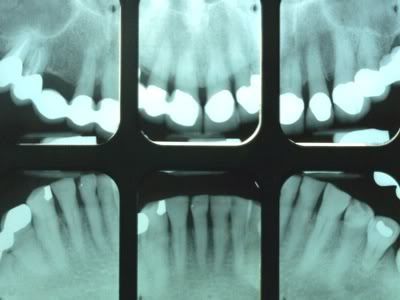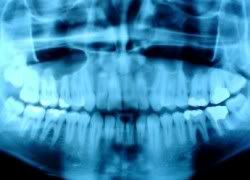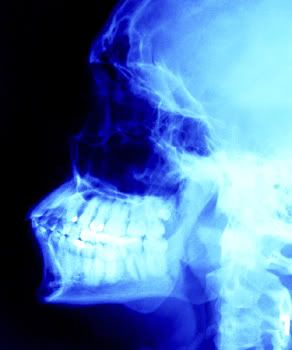X-rays allow us to see the spaces in between teeth, underneath crowns and fillings, and to check the bone levels underneath the gum line. Occasionally a specific tooth needs to be investigated for decay or infections with another X-ray. Our clinicians will determine how often your X-rays need to be taken.
The digital dental X-ray system is more sensitive than conventional X-ray film systems, so your exposure to X-rays is cut by as much as 90 percent. The large, colour-enhanced image is displayed on a computer which gives both our clinicians and patients a clearer picture of teeth, bone and surrounding oral structures.Digital X-rays have less of an impact on the environment. There are no used photo chemicals or lead films to dispose of. Because there's no time wasted waiting for films to be developed, your appointments take less time and it's fun to watch this system work! Most of our patients are amazed at how quick and easy the process is.
With better resolution, dramatically reduced radiation to the patient and the ability to zoom into parts of the image, digital dental X-ray is friendlier to our patients, and to the clinician. In addition to this, digital X-rays provide the ability to archive in original excellent quality, meaning that we can compare current X-rays to previous X-rays, and to send a perfect digital copy to specialists if the need arises.
Source: Greg Dougall Dental gdougalldental.com.au
You get less radiation and they are able to see the film more clearly. Because it's linked to a computer system they can change the contrast, measure bone level, clarify the image, diagnose more accurately, the list is endless. Digital x-rays are much better for you and them. You should be proud that your office is technologically advancing
Source: RDH, B.S (Registered Dental Hygienist
Digital xrays will expose the patient to less radiation and will allow the person taking the xrays to see them immediatly.
Source: Ronswife (Certified dental assistant)
There are five major reasons (in order of importance)
1.) *Less radiation exposure for the patient*,
2.) Better images for diagnosing,
3.) Earth friendly: no more hazardous chemicals generated during processing.
4.) Faster imaging,
5.) Real time worldwide electronic portability and accessibility with no degradation of image.
Glad your dentist made this commitment. It's a big deal to change over the office. Obviously s/he feels patient safety and health is important.
Source: Rayen | Another digital dentist
Source: answers.yahoo.com












